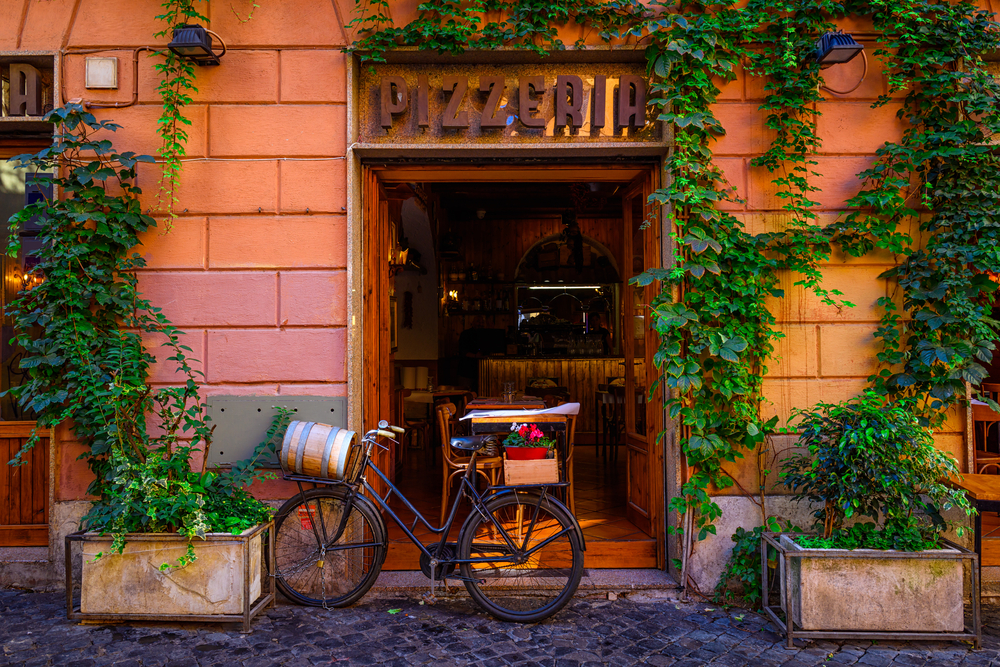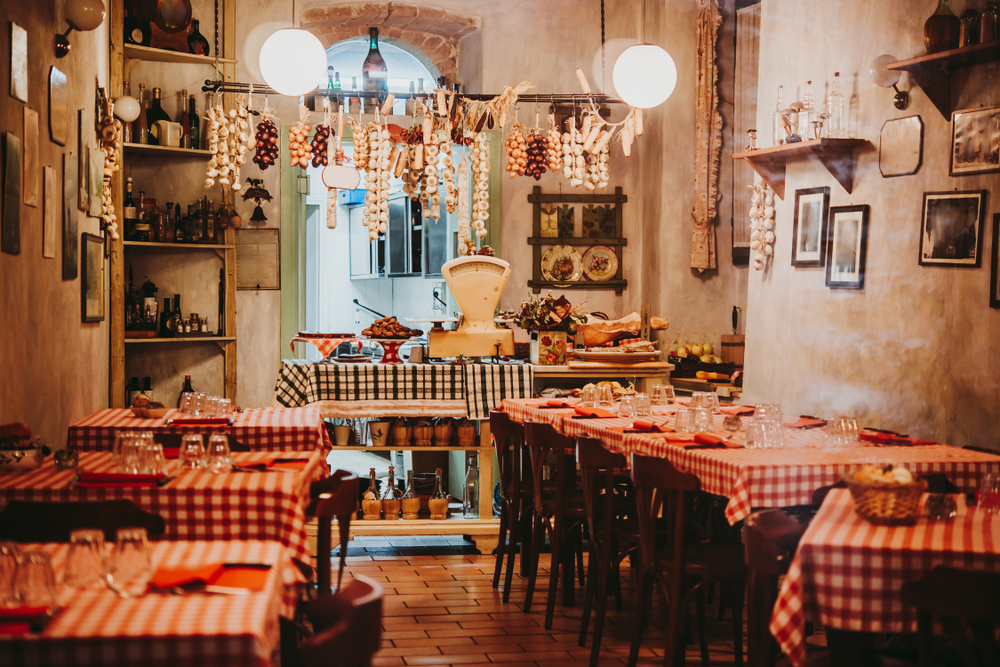In Italy, eating establishments dominate every city block. I say establishments because a restaurant or “ristorante” encapsulates only one specific kind of eatery. They all have different designated names which determine the specific dishes offered, the fare, and the atmosphere. Whether it’s understanding the difference between a bar and a pasticceria or an osteria vs. a ristorante, it is necessary to understand the many, sometimes subtle discrepancies between each to seek out your desired dining experience.
Bar: A bar in Italy is not what you might first imagine. Open to people of all ages, they serve bottom shelf liquor, beer and wine but the majority of their revenue comes from coffee sales. It feels more like a cafe than a traditional bar. In the morning you can find fresh pastries ready to be heated up, and by lunch you can choose from six or seven various paninis. Bars can be found on every city block and they are the most practical option for a quick coffee or a quality grab and go snack.

Pasticceria: Similar to a bar or cafe however what differentiates a pasticceria is that their baked goods are baked in house every morning. Akin to a typical bakery these friendly shops are where you’ll see most Italians meeting up for a breakfast coffee and pastry. You can’t go wrong with their staple order of an espresso and cornetto.
Tavola Calda: These are a cross between cafeterias and bars where you’ll find a wide range of hot meals to choose from. These are mostly frequented by working people in the area who have minimal time to find food on their lunch breaks Get a cheap lunch to go in these simple, no-frills establishments with self service and standing counters.

Pizzeria: There are traditional pizzerias, typically only open later in the day, where you can sit down and order a whole pizza. You won’t find much else on the menu. There are also “Pizza a taglio” which translates to pizza by the slice. At these establishments you can tell them how big of a slice you’d like and it is then weighed for price. The pizza here is meant to be a quick, easy snack that you typically eat standing up at a counter or that you take to go. After a long day of sightseeing one can easily satisfy their big appetite for a bargain price of only two or three euros.
Paninoteca: Choose from a selection of fresh breads, cheeses, meats and savor the blissful simplicity of the Italian “panino” which in some paninoteca’s, they make for you on the spot. You’ll find that the majority of fresh ingredients are produced in the encompassing region.

Trattoria: Trattorias are casual, typically family-run establishments with simple local dishes at reasonable prices. Cooking is modest and generally sticks to regional or local recipes, but portions are plentiful. Occasionally food is served family style at common tables. The rustic, familial trattoria is a great option if you’re looking for authentic home-style cooking at low prices.
Osteria: Osterias are even cheaper and more informal than trattorias. They originated back in Italy’s industrial age when coal miners needed a convenient spot to eat in the middle of a work day. Osterias served pasta, wine or sandwiches to go. They focused less on hospitality or comfort and more on simple convenience. There aren’t many of these classic osterias still existing today. What can cause some confusion is that many upscale restaurants today are calling themselves osterias to cultivate a nostalgic, traditional image. Modern day osterias, offer a simple, often verbal menu of pastas, grilled meats and fish, and local wines.
Enoteca: Enotecas traditionally served no food and were meant solely for the purpose of drinking wine. They can be viewed as what stands in place of the typical English or American bar or tavern in Italy. Nowadays most enotecas serve light appetizers including cheeses, meats, salads and bruschettas, along with an extensive variety of wine.
Ristorante: The Italian ristorante is the most formal and pricy type of dining establishment. Here you will find everything that you expect in a quality dining experience: good wait service, fine dining plating and dishes, and delicious food cooked by well-known, established chefs. It is customary to order more than one course because their comprehensive menus include an antipasto (starter), primi (first course: typically pasta), secondi (second course (typically a meat dish), contorni (a side dish) and dolci (dessert).
These various categories of eateries can be confusing, and even overwhelming at first. Now that you’ve taken the time to understand the differences between each type of establishment, you are well equipped to navigate the endless eating options that Italy has to offer.
By: Emma Seiwell

